Mad Hedge Technology Letter
March 4, 2020
Fiat Lux
Featured Trade:
(THE BEST TECH STOCKS TO BUY AT THE BOTTOM)
(NFLX), (ZM), (PTON), (AMZN), (OKTA), (WORK), (ATVI), (EA), (TTWO)

Mad Hedge Technology Letter
March 4, 2020
Fiat Lux
Featured Trade:
(THE BEST TECH STOCKS TO BUY AT THE BOTTOM)
(NFLX), (ZM), (PTON), (AMZN), (OKTA), (WORK), (ATVI), (EA), (TTWO)

Tech stocks that are begging to be picked up on the back of the coronavirus pandemic are Netflix (NFLX), Zoom Video Communications (ZM), workplace collaboration service Slack Technologies (WORK), and Peloton Interactive (PTON), the spin bike company.
Their short-term outperformance indicates that these stocks work well during mass pandemics shelving most outdoor activity and commerce.
The basket of 3 stocks has easily beat the S&P 500 since the coronavirus emerged as a threat in mid-January.
Home sitting doesn’t generate a net output of business activity unless that job is digital.
The majority of workers still commute in a physical car only to sit in an office, restaurant, or some other type of self-contained space.
That is the underlying problem that has no solution, and any rate cut by the Fed cannot ultimately solve consumers holed up in their house.
If the companies that could opt to go pure digital do take up the option, the number of remote workers would rise and digital products would be the ultimate beneficiary of this trend.
Companies that promote remote working such as Slack (WORK) and Google Hangouts are in pole position to reap the rewards.
These services include video conferencing software, logistical services, administrative services, network security services, ecommerce and any service that aids in generating digital content like Adobe and its umbrella of assets.
The trend was already transforming American culture, but the virus vigorously pulls forward a trend that was already in overdrive.
Enabling information workers to produce outside the traditional office environment is one of the lynchpins of the Silicon Valley model.
Companies will ultimately realize that spending big bucks on business travel to meet face to face for 30 minutes is probably not an optimal allocation of resources.
Business travel is getting cut with a cleaver such as Amazon.com (AMZN) who are forcing employees to avoid all nonessential travel for now, including within the U.S. Much of that travel could be replaced by video calls.
Other companies will get in on the action by directing their employees to work from home in the coming weeks.
Coronavirus mania has reached the U.S. shores with consumers stocking up on all the essentials at the local Costco.
If this gets worse, there is no solution unless a viable medical solution starts improving the health crisis.
There are still only 7 known fatalities from the coronavirus, all in the state of Washington, and limiting that number is critical to the health of the tech market.
Another company is Okta (OKTA), a leader in authentication security cloud software.
The company’s offering allows employees to use corporate applications on-site and remotely and protecting their access to their digital services is just as important as the work itself.
As consumer spurn movie theaters, concerts, and gyms, the entertainment space will give way to digital entertainment that includes Netflix (NFLX) and Roku (ROKU).
Roku is a great place to hide out in the world where Covid-19 meets daily consumers in the U.S. in a more meaningful way during 2020.
Netflix is a company that has defied gravity this year by bull-rushing its way through the competition and proving there is space for everyone.
The increase in incremental demand for digital content will only help Netflix claim a bigger part of the pie.
We can also lump the videogame industry into this cohort such as Activision Blizzard (ATVI), Electronic Arts (EA), and Take-Two Interactive Software (TTWO).
They have faced serious headwinds from gaming phenomenon Fortnite, but prolonged home sitting will even boost their shares.
The spine of digital services will receive a boost as well from the usual cast of characters such as Microsoft (MSFT), Apple (AAPL), Alphabet (GOOGL), and Facebook (FB).
As investors wait for the climax of the coronavirus and the Central Bank has indicated that they are open to more accommodative policy, we could be ripe for more volatility.
Chinese coronavirus cases have started to taper off and if the rest of the world trends in a similar fashion, this virus scare could be in the history books in 2-3 months.
However, the trajectory of the virus is still a massive unknown in the U.S. and winning the health battle is the only panacea to this dilemma.
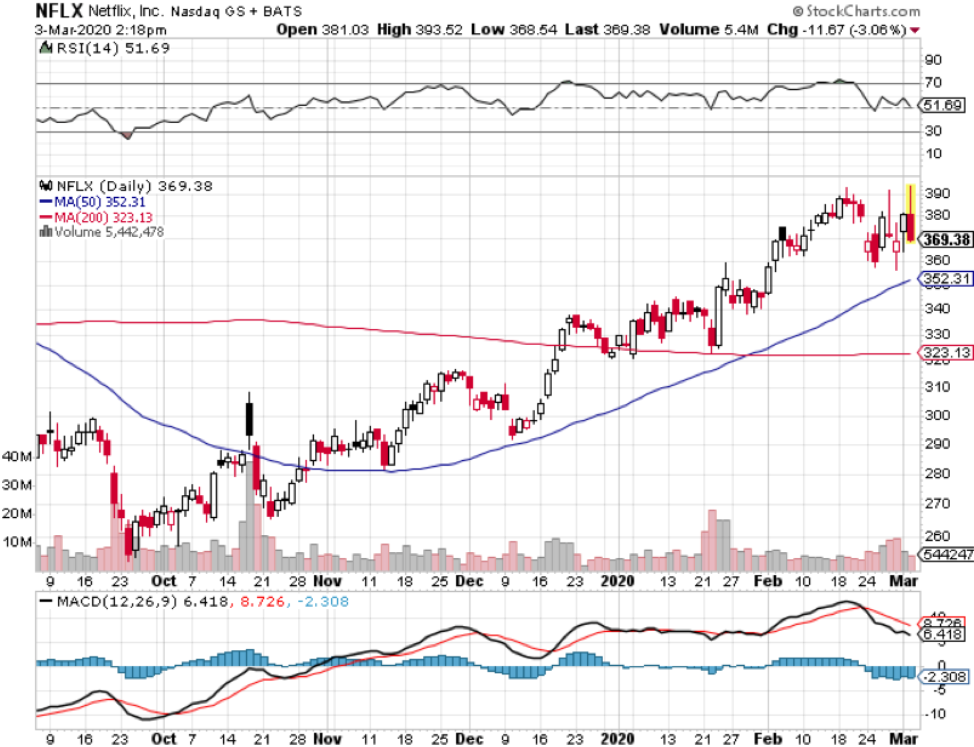
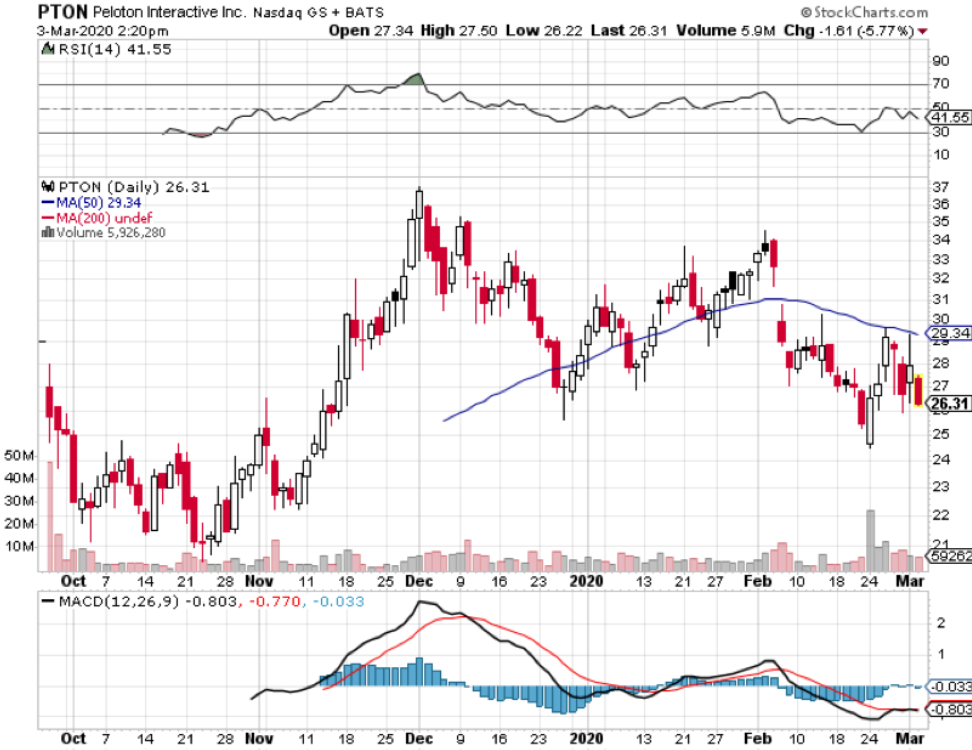
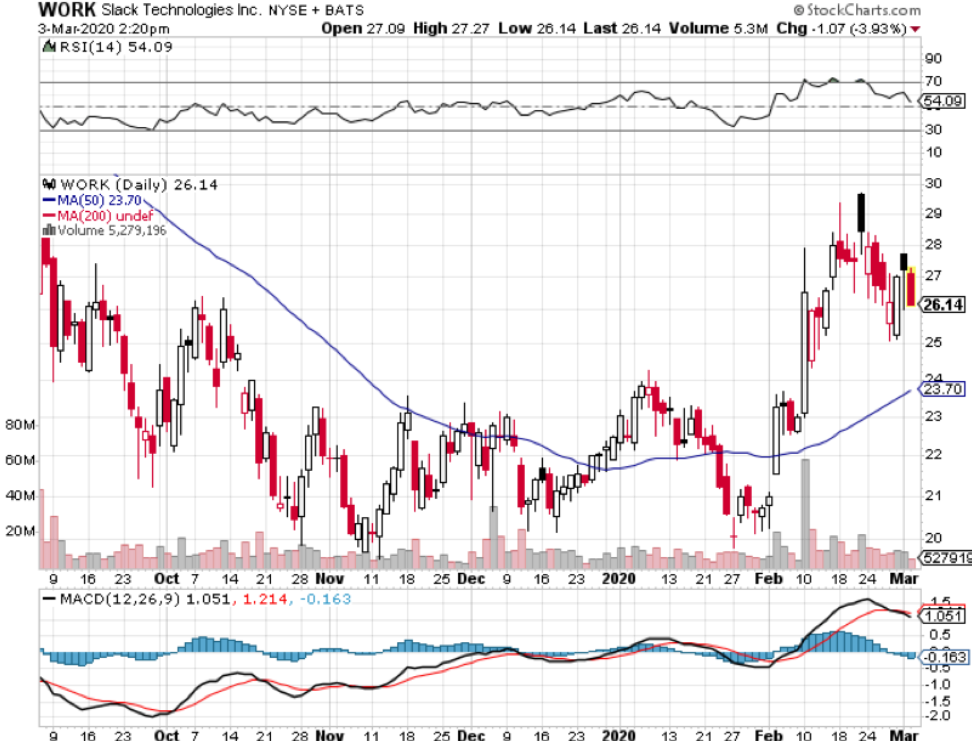
Mad Hedge Technology Letter
March 19, 2019
Fiat Lux
Featured Trade:
(GOOGLE’S AGGRESSIVE MOVE INTO GAMING),
(GOOGL), (AAPL), (FB), (NFLX), (MSFT) (EA), (TTWO), (ATVI)

The saturation of tech is upon us.
That is the takeaway from Google’s (GOOGL) hard pivot into gaming.
The goal of their new gaming service is to become the Netflix (NFLX) of gaming allowing gamers to skip purchasing third-party consoles and playing games directly from an Android-based Google device.
Middlemen in the broad economy are getting killed and this is the beginning.
What we are really seeing is a last-ditch effort to protect gaming consoles - these devices will become extinct in less than 20 years boding ill for companies such as Sony and Nintendo
The cloud is still all the rage and companies such as Microsoft (MSFT), Alphabet (GOOGL), and Apple (AAPL) have the natural infrastructure in place to offer cloud-based gaming solutions.
Phenomenon such as internet game Fortnite have shown that consoles are outdated and relying on the cloud as a fulcrum to extract gaming revenue by way of add-ons and in-game enhancements will be the way forward
Another key takeaway from this development is that passive investment is dead, even more so in tech, where these big tech companies are starting to bleed over into each other's territory.
This dispersion will create opportunity and pockets of weakness.
I blame this on a lack of innovation with companies still trying to extract as much as they can from the current smartphone-based status quo which has pretty much run its course.
Technology is itching for something revolutionary and we still have no idea what that new idea or device will be.
The rollout of 5G is promising and companies will need some time to adapt to this super-fast connection speed.
In either case, I can tell you the revolution won’t include foldable smartphones.
In 2018, the gaming industry flourished on accelerating momentum by registering over $136 billion in sales, and the revenue growth rate is already about 15% and increasing.
Naturally, companies such as Amazon and Google want a piece of this action and are hellbent on making inroads in the gaming environment such as Amazon's ownership of Twitch, which is a game streaming service where viewers can watch live tournament-style competitions proving extremely popular with Generation Z.
I applaud this move by Google because they already have proved they can execute on certain mature assets such as YouTube which has become the Netflix replacement of 2019.
Doubling down in the gaming sector would be a bonus as they search a second accelerating revenue driver that will dovetail nicely with the overperformance in YouTube this year.
It’s even possible that YouTube could be modified to support live stream gaming, certainly various synergistic dynamics are at play here.
Even if they fail - it's worth the risk.
Revenue extraction will be painful for certain companies like Facebook (FB) in this new environment, who has seen a horde of top executives abort after the company drastically changed directions, believing the company is on a suicide mission to fines and more regulatory penalties.
I've mentioned in the past that Facebook no longer commands the same type of employee brand recognition they once cultivated.
Facebook will find a tougher time to find the right people they need to execute their private chat plan, by linking the likes of WhatsApp, Instagram, and Facebook Messenger.
This is a high-risk high-reward proposition that could end up with Facebook's co-founder Mark Zuckerberg in tears if regulators give him the cold shoulder, and that is why many executives who are risk-adverse want to cash in now because they sink with the Titanic.
Not only are gaming assets becoming saturated, but the general online streaming environment is attracting a tsunami of supply all at one time.
Online content is already veering into the same type of pricing structures that cable offered traditional customers.
Investors will have to ask themselves, how much will the average consumer spend in content-based entertainment per month?
My guess is not more than $100 per month.
The saturation will cause tech companies to become even more draconian.
Be prepared for some more epic in-fighting until a new gateway of internet monetization opens up.
There has never been a better time to be a tactical and active investor in tech.
The Fang trade has splintered off with each company facing unpredictable futures.
Unearthing value will become more difficult because these traditional bellwether tech stocks have decoupled and aren't going straight up anymore.
Those zigs and zags will still be buttressed by a secular tailwind of the migration to digital, but there are certain winners and losers that will result of this.
Apple announcing a new streaming product is proof that these Silicon Valley tech firms are desperate for new profit drivers as the woodchips that fuel the fire start to run noticeably short on supply.
At the bare minimum, this looks disastrous for the traditional gaming companies of Electronic Arts (EA), Take-Two Interactive (TTWO), and Activision (ATVI) whose shares have been effectively shelved due to the Fortnite revolution.
EA has fought back with their own Fortnite lookalike called Apex Legends which showed a Fortnite-like trajectory sucking in 10 million players in the first 72 hours.
The stock exploded 16%, signaling this is the new way forward for gaming companies.
As a whole, these traditional gaming studios simply don’t have the firepower to compete with the big boys, let alone possess a strong cloud infrastructure.

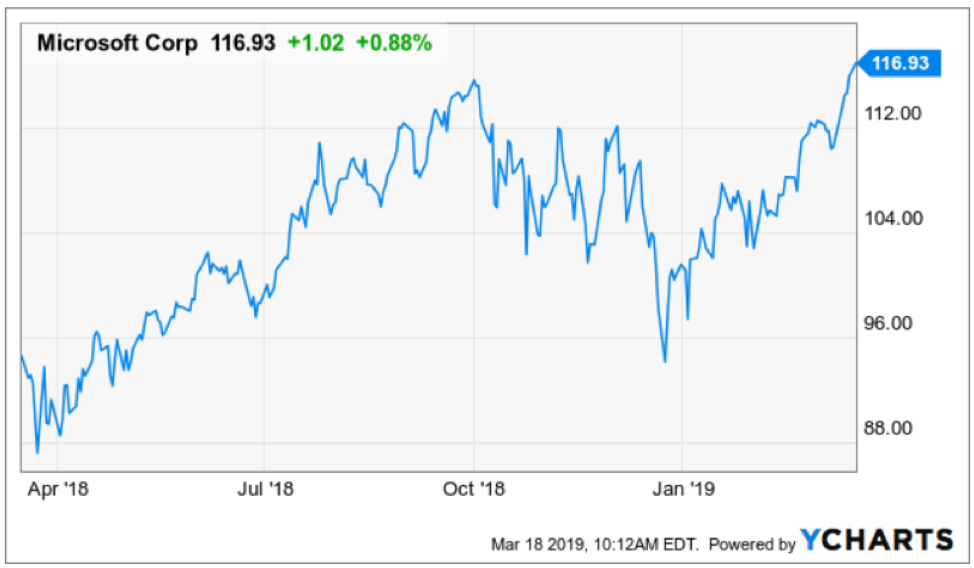
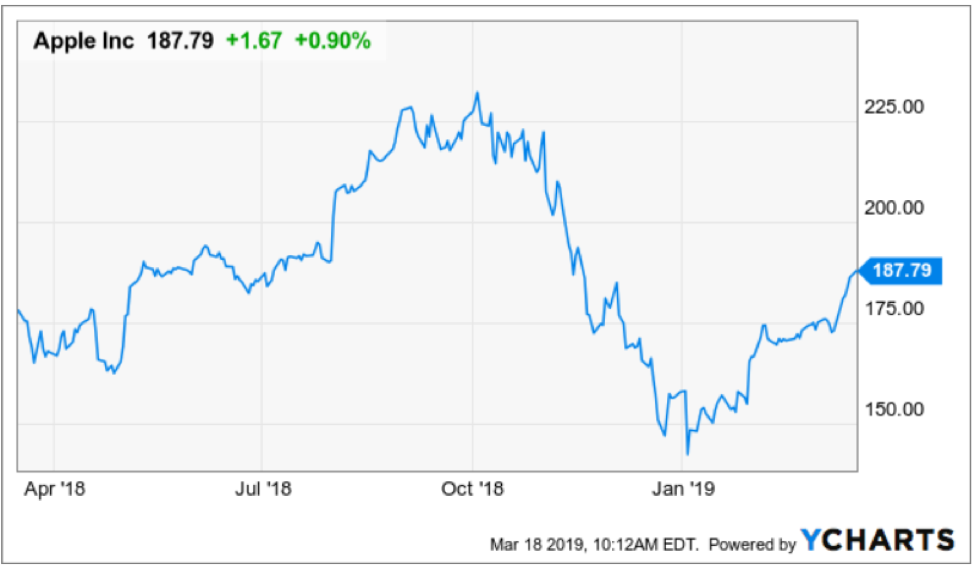
Mad Hedge Technology Letter
February 12, 2019
Fiat Lux
Featured Trade:
(MEET YOUR HOME OF THE FUTURE),
(KASITA),
(PLEASE SIGN UP NOW FOR MY FREE TEXT ALERT SERVICE NOW)

Mad Hedge Technology Letter
February 11, 2019
Fiat Lux
Featured Trade:
(HOW FORTNITE IS TAKING OVER THE GAMING WORLD),
(TTWO), (EA), (ATVI), (NFLX), (FORTNITE)

One idyllic content company reshaping the content landscape as we know it is Epic Games who is the producer of the video game phenomenon Fortnite.
Not only is Epic Games rapidly altering the video game industry by itself, it is also starting to take a bite out of Netflix’s subscriber growth momentum.
The company was established by Tim Sweeney as Potomac Computer Systems in 1991, originally founded in his parents' house in Potomac, Maryland.
The most fascinating nugget of information that came out of Netflix’s most recent earnings call was not that Netflix has already corralled 10% of television screen time in America, but the reason why this percentage is lower abroad is because of Fortnite taking away Netflix’s mojo.
Netflix (NFLX) has lately been asked to measure their content lead to the likes of Hulu, HBO, and the potential Disney streaming product about to hit the market.
But they explicitly confessed they were more worried about Fortnite and the revolution it is spawning.
The key takeaway is that Netflix is not only competing with fellow online content streamers, but video games are more of a threat to them than ever as they compete for the cord cutters and the elusive “cord nevers”.
Cord nevers are consumers who are digital natives who bypassed traditional media channels altogether.
Echoing the stickiness that Netflix has with its younger demographics, the company has targeted mobile screen time as a core driver usurping around 8% of American mobile phone screen time.
And if you thought Netflix was trying to sort out its own Fortnite problem, then how do you think the traditional American video game cohort felt about their own Fortnite problem?
The traditional trio of EA Sports (EA), Activision (ATVI), and Take Two Interactive (TTWO) have been shredded to bits by Fortnite.
Late last year, I gave readers a steer clear synopsis of this company and the latest dead cat bounce in EA and Take Two Interactive should be chances to cut your losses instead of putting more money to work in these names.
Yes, the momentum in Fortnite is that palpable that you stay away from any name that this phenomenon affects.
Activision had no dead cat bounce being the weakest of the three and the stock has gone awry almost halving from $83 to $43 today.
EA’s earnings report was a disaster with their lead title, Battlefield V, doing 1 million fewer sales than the 7.3 million management expected.
During the same holiday season, Take Two Interactive issued a follow-up to a classic that was better than EA’s holiday flagship game called Red Dead Redemption 2 and Activision rolled out another iteration of Call of Duty: Black Ops 4.
Even between the three, the competition was fierce, then throw Fortnite into the mix and comps are getting killed with huge earnings misses penalizing the share prices of this once-vaunted trio.
With the explosion of content in the past several years, consumers are absorbing more content than ever.
Most of this avalanche of content is consumed on mobile phones or televisions, but the behavior varies when you look closer at the different demographics.
Cord cutters total in the low 20 million and are growing 30% annually.
Cord nevers amount to about 30 million growing at 66%.
This all amounts to Americans spending about 12 hours accessing content every day running up to the barrier of natural limits.
That might give consumers some allocated time to sleep, eat, and work, but not much else. We are robotically reliant on content providers to deliver us our fill of daily content.
When automotive technology comes online, it could potentially eke out an incremental 1-2 hours that Americans can stare at their content while being chauffeured around.
How is Fortnite doing financially?
Fortnite earned $2.5 billion in 2018 from a mix of in-game items and passes.
A seasonal Battle Pass is $10, and over 30% of American gamers have purchased this product.
Unlike traditional video gamers who are tied to certain consoles, Fortnite is available on seven platforms: PlayStation 4, Nintendo Switch, Xbox One, PC, Mac, iOS, and Android.
In a time of $60 video games, this new freemium model must shake the foundations of the video gaming establishment.
The rise of freemium games could eradicate the console completely.
A $200-300 console seems expensive if games are free on your $100 Android phone.
The worst side-effect of Fortnite for the traditional video game producers is not Fortnite itself.
It’s the fact that this new model has opened up a new can of worms proving this freemium model with no consoles is the key to unlocking gaming audiences with a 24-hour battle royale, free to play, on-demand, in-game currency, season pass model that was thought to be a hopeful wish by industry analysts.
Then the next question is when will the next Fortnite-esque freemium go viral and can these legacy gaming companies alter their model to accommodate this new business model?
Indeed, management must be freaking out. They thought they had a monopoly on the gaming industry but the nimbler and forward-thinking firm has won-out.
Even the most subscribed YouTuber PewDiePie from Sweden is using Fortnite to keep him in the lead for most YouTube subscribers as Indian music YouTube channel T-Series has caught up with his subscriber count that currently totals 84.3 million.
PewDiePie’s lead was cut down to 20,000 and decided to leverage playing Fortnite squad matches to boost his subs.
The upload got over seven million views in a day backing up my thesis that Fortnite has become the hottest media content asset for cord cutters and cord nevers around the world.
As for the video game stocks, don’t touch them until Fortnite trails off.
And if another freemium game comes to the fore that they aren’t on, run for the hills.
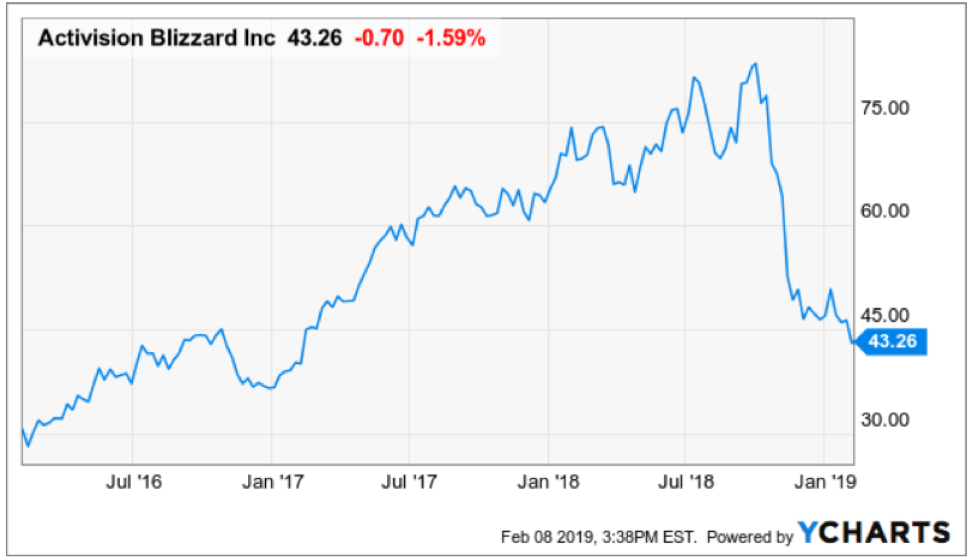

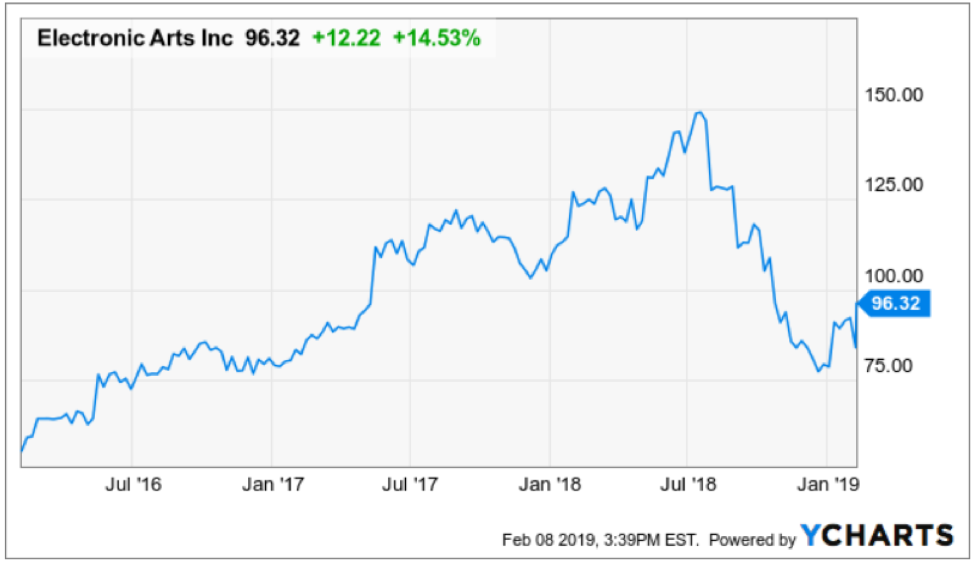
Mad Hedge Technology Letter
December 12, 2018
Fiat Lux
Featured Trade:
(WHY GAMERS ARE TAKING OVER THE WORLD)
(EA), (TTWO), (ATVI), (GME), (MSFT)

I nailed it.
The video game migration has been nothing short of bonkers for the average onlooker who has no interest in gaming.
Personally, I can’t really fathom spending every waking moment in front of a screen playing a game, but I was born in a different generation.
But for the younger generations, this is completely normal and a standard way to use extracurricular time.
This behavior is the origin hewing together a broader thesis of investing in behemoth video game companies boasting premium gameplay and high-quality content.
As the year inches closer to the finish line, I would have been proved correct if it wasn’t for one surprise that nobody could have ever predicted.
Enter Fortnite.
Fortnite has reigned supreme in 2018 and single-handedly tarnished the performance of the powerful trio of Electronic Arts (EA), Activision Blizzard (ATVI), and Take-Two Interactive (TTWO).
The multiplayer battle royale game is produced by Epic Games, an American video game developer based in Cary, North Carolina and this small town in Chatham County owns the video game world right now.
Funnily enough, the company was created by Tim Sweeney in 1991 in his parents' basement in Potomac, Maryland.
Epic Games blindsided the video game industry who believed barriers of entry were too high, and an outsider would have no chance to steal legitimate market share from the incumbents.
They thought wrong because Epic Games has done exactly that and more.
Instead of splurging on a pricey console and game titles, Fortnite has followed the cloud industry’s blueprint with a freemium model as an introductory way to lure in new users.
This must have Sony and Microsoft tearing their hair out because it could potentially rule the Xbox One and PS4 consoles obsolete.
How easy is it to play Fortnite?
Simply download and install the game for free on your Xbox One, Nintendo Switch, PlayStation 4, iPhone, Android, or Mac by opening the respective app store and selecting “Fortnite.”
That’s right, you can play this game on almost any platform appealing to the masses of fans.
Does this freemium model mean that Epic Games misses out on revenue?
Absolutely not.
The freemium model is just the conversional entry point to lure in new gamers.
Epic Games profits by selling in-game currency named V-Bucks or Vinderbucks used for purchasing items from the in-game Vindertech Store in Save the World, or to pocket cosmetic items from the Item Shop and the Battle Pass in Battle Royale.
V-Bucks revenue has been piling up with global gamers spending an average of $1.23 million per day in the iOS version for the month of November.
The number of total gamers recently eclipsed the 200 million mark and the previous recorded number was in June when Fortnite users totaled 125 million.
The 60% surge in five months has been the main catalyst for large video game makers to experience violent sell-offs because there is a direct correlation between growing Fortnite users and cratering usership from the traditional players.
Then throw in the mix of the secret recipe to Fortnite’s success - the mind-numbing speed and impact of the online updates enhancing the game; adding and adjusting weapons, providing new cosmetic items for players to buy and altering the game map.
Not only did Epic draw in new players in waves, it retained them just as well.
Putting the cherry on top, Fortnite made major cultural inroads into mainstream society legitimizing this title as the game of 2018.
This was evident during the Russia FIFA World Cup where star soccer players were doing Fortnite dances after scoring critical goals.
Put it this way, the game hasn’t even been allowed in China and is expected to earn over $2 billion in 2018.
As we speak, millions more plan to migrate from their former games enticed by the free battle royal platform.
The game is nothing short of a cultural phenomenon and none of the major video game developers can keep up.
Take-Two Interactive even had a smash hit come online with Red Dead Redemption 2, a Western-themed action-adventure game developed and published by Rockstar Games, lighting up screens all over the world.
Not even that could taper off the enthusiasm for Fortnite.
Activision cannot keep its gamers from jumping ship.
The mainstay game developer announced a major contraction of users from 345 million monthly active users for top games in its Candy Crush, World of Warcraft and Call of Duty franchises in the third quarter sharply down from 352 million users in the second quarter and 384 million users a year ago.
GameStop (GME) who recently slashed its full-year 2019 earnings outlook faces a grim 2019 as shares are down about 25% this year.
I perfectly predicted this and in almost every scenario, GameStop’s future looks ugly unless they do some major surgery to the business model.
There is no room for video game brokers anymore in this cloud-based world.
This is because new game studios will follow the Epic Games blueprint and bypass consoles all together and offer games for free.
The cloud will be the new go-to device for playing video games, and gamers will download games straight from the cloud via wireless broadband.
This trend is set to mushroom when 5G comes online in 2019 and 2020, connection speeds are expected to be 100 times faster than current 4G speeds.
In fact, the new consoles currently being developed by Nintendo, Microsoft, and Sony could be the last game consoles ever developed before they go extinct.
The digital revolution promises that hardware becomes incrementally slimmed down with every iteration until at some point there will be no hardware at all.
We have seen this trend in consumer devices with the smartphone, television, and desktop computer amongst other products.
This is why Microsoft (MSFT) has been busy buying up video game content producers, and confident in this sense that gold standard content truly is king.
It makes sense to put in more irons in the fire to potentially score a culture-shifting game like Fortnite. Not every video game will be a blockbuster hit, but the more video game developer Microsoft buys, there will be a higher chance of dominating the video game market.
Fortnite’s disruption of Activision, EA, and Take-Two Interactive signals a new beginning of the end for the traditional video game developers.
Darkhorse game developer could sprout up out of nowhere even more in 2019 offering console-less free games and leaner, nimbler models.
How are console manufacturers and game developers expected to keep up with the surge in gaming expectation?
The answer is they will not and look for these big three developers to attempt to stem the bleeding as Fortnite is expected to become even more thrilling next year tearing away more gamers from other systems in a dog-eat-dog world.
And then there is the possibility of the FANGs crossing over to gaming, searching for new growth drivers which would really flatten these shares like a pancake.
Microsoft is already deep into this industry, why wouldn’t their cousins follow them to profits too?
Ultimately, I am bearish on Activision, Electronic Arts, and Take-Two Interactive going into 2019 unless there is an upside catalyst that magically appears.
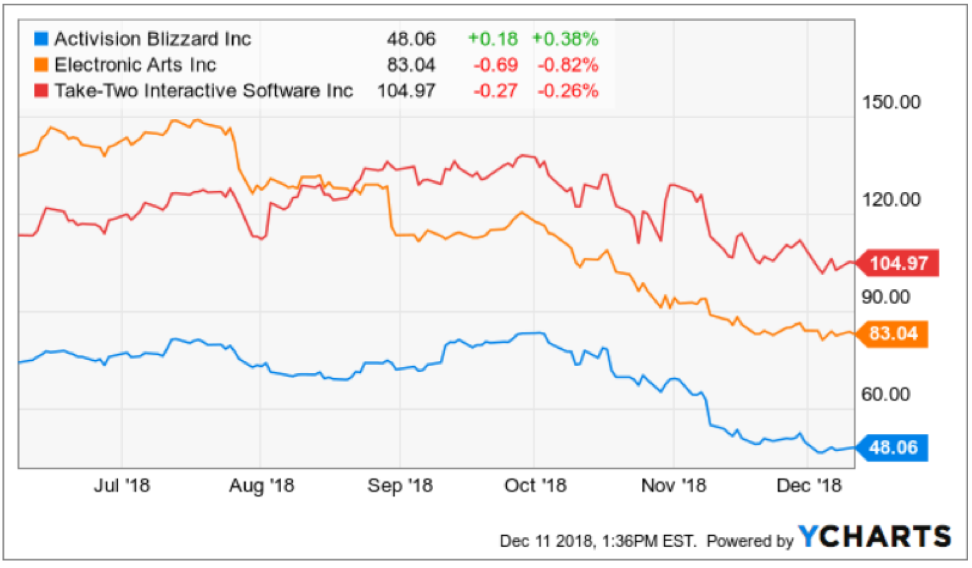
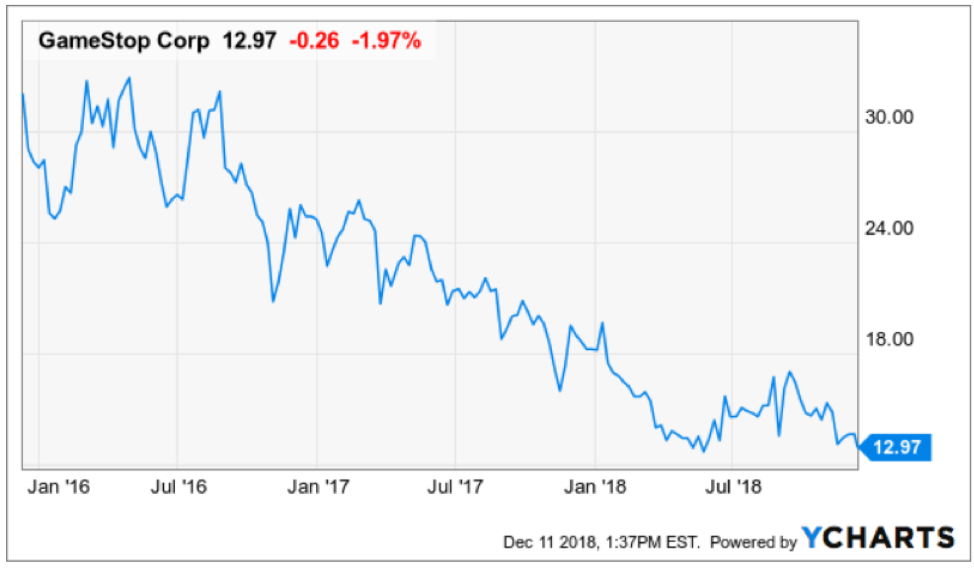

At our weekly Monday staff meeting, coworkers were griping and grimacing about their failed internet connections and annoying glitches to their favorite e-commerce sites during the mad rush to find the best deal during Black Friday and Cyber Monday.
Internet traffic was that torrential when sites were driven offline for minutes and some, hours by a bombardment of gleeful shoppers hoping to splash their credit card numbers all over the web on sweet discounts.
The crashing of system servers epitomizes the robust transition to online commerce that has most of us pinned to our devices surfing our go-to platforms all day long.
According to data from Adobe (ADBE) analytics, Black Friday sales jumped 23.6% YOY to $6.22 billion, and it was the first time in history that mobile sales broke the $2 billion threshold.
It is a clear victory for e-commerce and, in particular, mobile shopping that has become more integrated into modern tech DNA.
Mobile sales comprised 33.5% of total sales and were up from 29.1% last year, signaling that more is yet to come from this transcending movement that is shoving everything from content, digital ads, entertainment, banking and pretty much everything you can think of to your handheld smartphone.
CEO of Kohl’s (KSS) Michelle Gass confirmed the e-commerce strength by saying, “80 percent of traffic online came from mobile devices.”
The beauty of this movement is that it’s not an “Amazon (AMZN) takes all” scenario with other players allowed to feast on a growing size of the e-commerce pie.
“Click and collect” has been a strategy that has paid off handsomely with sales up 73% YOY during the shopping holidays.
This all supports my prior claim that e-commerce is one of the most innovative and dynamic parts of technology especially the grocery space, and the buckets full of capital attempting to reconfigure the e-commerce spectrum is creating an enhanced customer experience for the final buyer resulting in better products, superior delivery methods, and cheaper prices.
Some other retailers spicing up their e-commerce strategy are dinosaur big-box retailer’s intent to defend their business from the Amazon death star.
If you can’t innovate in-house, then “borrow” the innovation from somewhere else.
That is exactly what Target (TGT) has chosen to do announcing last week that it would grant free 2-day shipping with no minimum sale threshold.
The tactic is bent on undercutting Walmart (WMT) who currently operate a 2-day free shipping policy with a minimum order of $35.
Most shoppers will buy in bulk easily eclipsing the $35 per order mark minimizing the rot of small orders.
And if they aren’t eclipsing the $35 per order mark, it demonstrates the firm’s offerings lack the diversity and quality to compete with Amazon.
Capturing the incremental sale squarely rests on the e-tailers ability to coax out the buyers’ impulses to move on the can’t-miss items.
The lesser known retailers fail miserably at matching the lineup of products that Amazon can roll out.
The bountiful product selection at Amazon leads customers to pay for 3, 4, 5, 6 or more items on Amazon.com.
That said, I am bullish on Walmart’s e-commerce strategy. The “click and collect” strategy has shown to be an outsized winner increasing industry sales of this type 120% YOY.
Walmart is at the center of this strategy and they are refurbishing their supercenters to accommodate this growth in collecting from the curb.
Effectively, this gives customers the option to skip the queue instead of bracing the hoards and navigating the crowds of shoppers in the supercenter.
Other changes are minor but will help, such as offering online product location maps to customers beforehand and allowing customers to pay for large items like big-screen televisions on the spot.
The biggest windfall is derived from the cataclysmic demise of Toy “R” Us, giving Walmart a new foothold into the toy business.
Walmart is beefing up toy items by 40% in the stores and layering that addition with another 30% increase in their e-commerce division.
Adobe’s upper management recently said in an interview that interactive toys have been a wildly popular theme this year amid a backdrop of the best holiday shopping season ever recorded.
Another attractive gift selling like hotcakes are video games, titles boding well for sales at Activision (ATVI), EA Sport (EA), and Take-Two Interactive (TTWO).
Reliant IT infrastructure will be a key component to executing these holiday sales bonanzas.
Clothing retailer J. Crew and home improvement chain Lowe's (LOW) were grappling with sudden disruptions to their IT systems before they managed to get back online.
More than 75 million shoppers parade the internet to shop during Black Friday and Cyber Monday, and the opportunity cost swallowed to a tech glitch is a CEO’s worst nightmare.
Ultimately, what does this all mean?
Focusing on the positive side of the surging holiday sales is the right thing to do because the avalanche of momentum will have a knock-on effect on the rest of the economy.
Certain companies are positioned to harvest the benefits more than others.
Amazon guided its 4th quarter estimates conservatively and is in-line to beat top and bottom line forecasts.
Other pockets of strength are Walmart’s tech pivot, albeit from a low base. Walmart still has more room to maneuver and they are in the 2nd inning of their tech transformation snatching the low-hanging fruit for now.
Another interesting e-commerce company swinging its elbows around is Etsy (ETSY).
They sell vintage and handmade craft adding the personalized touch that Amazon can’t destroy.
Margins will be higher than the typical low-cost, value e-commerce platform, but scaling this type of business will be more difficult.
Sales grew 41% sequentially and just in time for a winter holiday blowout.
Etsy became profitable in 2017 after three straight loss-making years, and 2018 is poised to become its best year ever.
The profitability bug is hitting Etsy at the perfect time with its EPS growth rate up 36% sequentially.
They report at the end of February and I expect them to smash all estimates.
There are some deep ramifications for the long term of e-commerce that is beginning to suss itself out.
For one, shipping times will continue to be slashed with a machete. If you are enjoying the 2-day free shipping from Amazon and Target now, then wait until 2-day becomes 1-day free shipping.
Then after 1-day free shipping, customers will get 10-hour shipping, and this won’t stop until goods are shipped to the customer’s door in less than 1-hour or less.
This is what the massive $50 billion in logistical investments over the next five years by the likes of Uber and Amazon are telling us.
It will take years for the efficiencies to come to fruition, but it is certainly in the works.
In the next five years, America’s logistics infrastructure will have to accommodate the doubling of e-commerce packages from 2 billion to 4 billion per year.
Another trend is that omnichannel offerings are sticking and won’t go away anytime soon.
It was once premised that online sales would destroy brick and mortar, yet moving forward, a mix of different sales channels will be the most efficient way of moving goods in the future.
Pop-up stores have been an intriguing phenomenon of late, and surprisingly, 60% of consumers still require interaction with the product to be convinced it's worthy of buying.
Certain products such as fashionable dresses and designer shoes must be given a whirl before a decision can be made. This won’t change anytime soon.
The timing of the sales and marketing push has been moved forward as competitors are eager to get a jump on one another.
Management is agnostic to the timing of the sale.
Thus, discounted sales will show up a week before Thanksgiving as pre-Thanksgiving sales in the future elongating the holiday shopping season cycle by starting it early and delaying the finish of it.
Lastly, the record numbers prove that the e-commerce renaissance and the pivot to mobile is not just a flash in the plan.
What does this mean for tech equities?
The temporal tech sell-off of late is largely a result of outside macro forces and is not indicative of the overall health of the tech sector that has experienced record earnings.
If the markets can keep its head above the February lows, it sets up an intriguing December fueled by Americans flashing their digital wallets on online platforms.
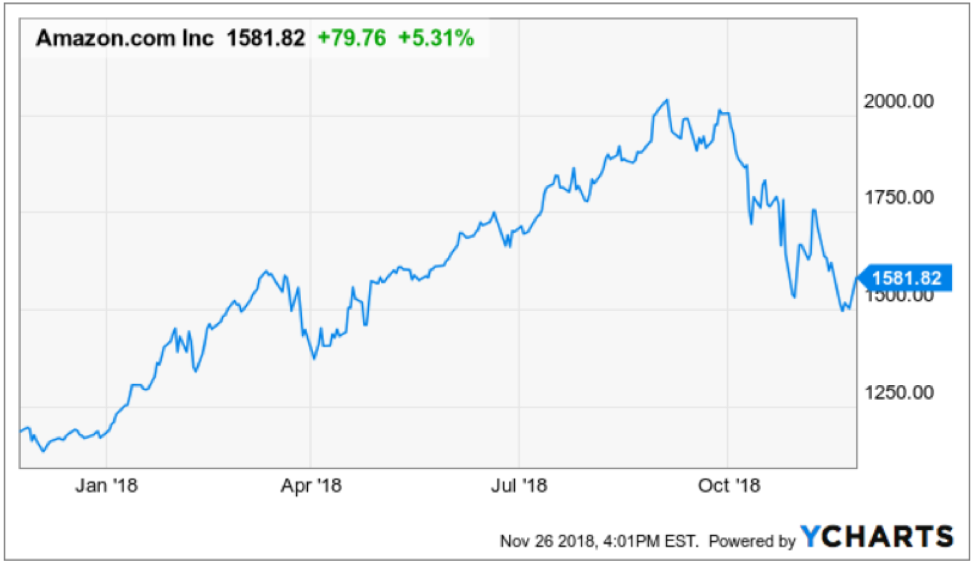
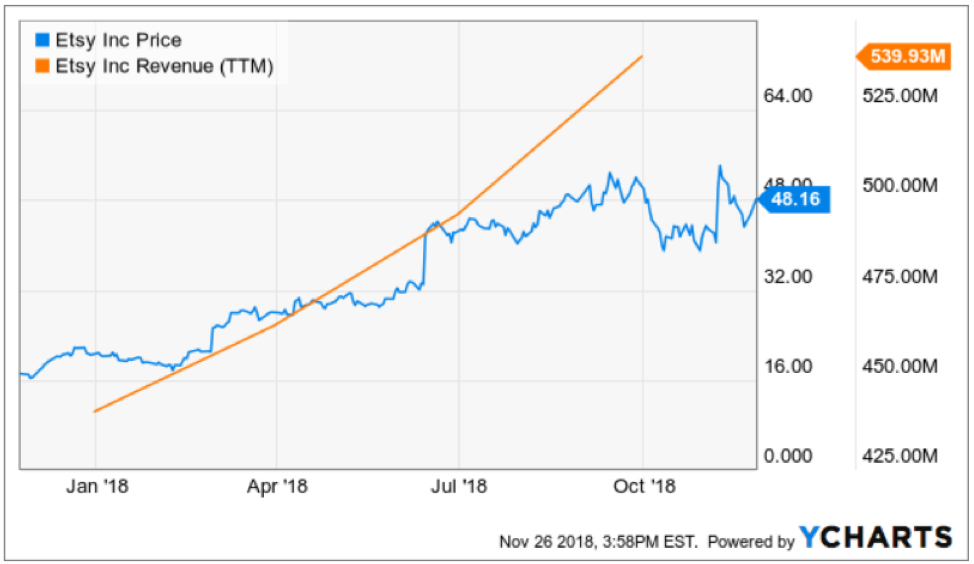
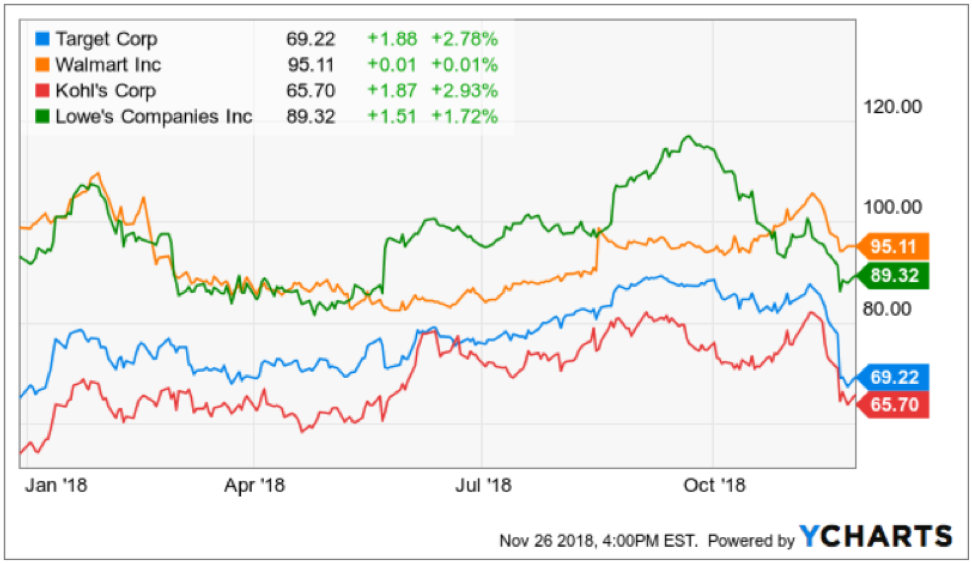
Legal Disclaimer
There is a very high degree of risk involved in trading. Past results are not indicative of future returns. MadHedgeFundTrader.com and all individuals affiliated with this site assume no responsibilities for your trading and investment results. The indicators, strategies, columns, articles and all other features are for educational purposes only and should not be construed as investment advice. Information for futures trading observations are obtained from sources believed to be reliable, but we do not warrant its completeness or accuracy, or warrant any results from the use of the information. Your use of the trading observations is entirely at your own risk and it is your sole responsibility to evaluate the accuracy, completeness and usefulness of the information. You must assess the risk of any trade with your broker and make your own independent decisions regarding any securities mentioned herein. Affiliates of MadHedgeFundTrader.com may have a position or effect transactions in the securities described herein (or options thereon) and/or otherwise employ trading strategies that may be consistent or inconsistent with the provided strategies.
This site uses cookies. By continuing to browse the site, you are agreeing to our use of cookies.
OKLearn moreWe may request cookies to be set on your device. We use cookies to let us know when you visit our websites, how you interact with us, to enrich your user experience, and to customize your relationship with our website.
Click on the different category headings to find out more. You can also change some of your preferences. Note that blocking some types of cookies may impact your experience on our websites and the services we are able to offer.
These cookies are strictly necessary to provide you with services available through our website and to use some of its features.
Because these cookies are strictly necessary to deliver the website, refuseing them will have impact how our site functions. You always can block or delete cookies by changing your browser settings and force blocking all cookies on this website. But this will always prompt you to accept/refuse cookies when revisiting our site.
We fully respect if you want to refuse cookies but to avoid asking you again and again kindly allow us to store a cookie for that. You are free to opt out any time or opt in for other cookies to get a better experience. If you refuse cookies we will remove all set cookies in our domain.
We provide you with a list of stored cookies on your computer in our domain so you can check what we stored. Due to security reasons we are not able to show or modify cookies from other domains. You can check these in your browser security settings.
These cookies collect information that is used either in aggregate form to help us understand how our website is being used or how effective our marketing campaigns are, or to help us customize our website and application for you in order to enhance your experience.
If you do not want that we track your visist to our site you can disable tracking in your browser here:
We also use different external services like Google Webfonts, Google Maps, and external Video providers. Since these providers may collect personal data like your IP address we allow you to block them here. Please be aware that this might heavily reduce the functionality and appearance of our site. Changes will take effect once you reload the page.
Google Webfont Settings:
Google Map Settings:
Vimeo and Youtube video embeds:
